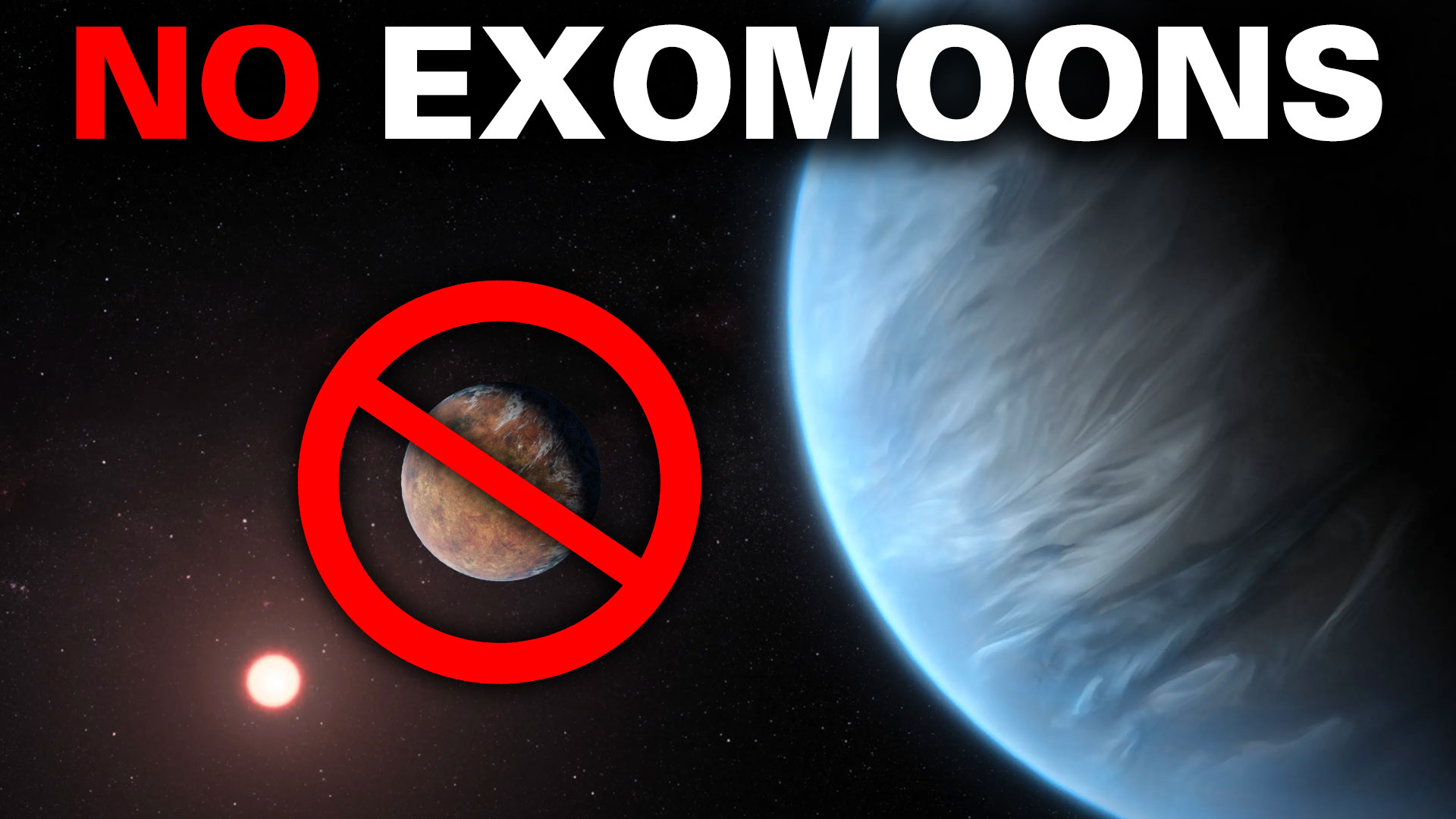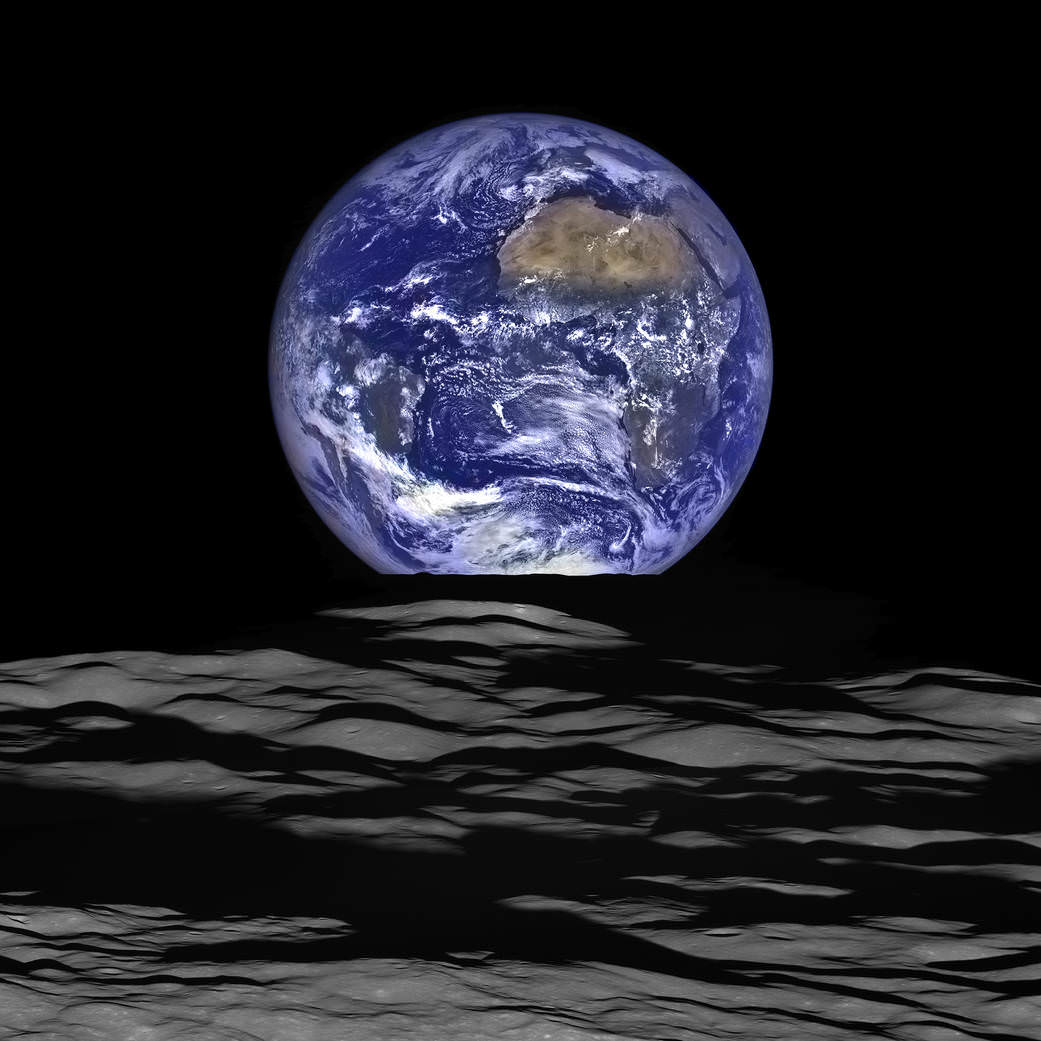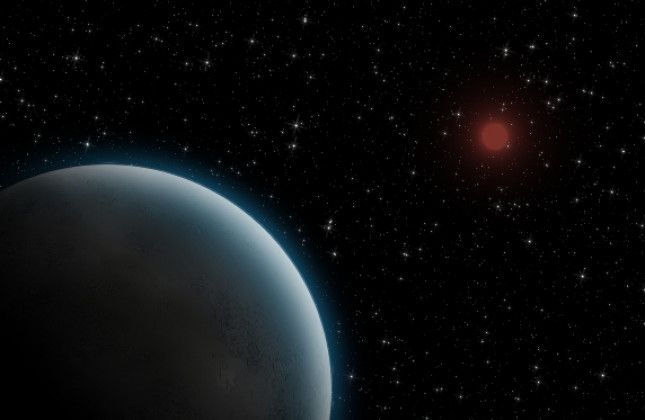Do exoplanets have exomoons? It would be extraordinary if they didn’t, but as with all things, we don’t know until we know. Astronomers thought they may have found exomoons several years ago around two exoplanets: Kepler-1625b and Kepler-1708b. Did they?
Continue reading “Did We Find Exomoons or Not? The Question Lingers.”Big Planets Don’t Necessarily Mean Big Moons
Does the size of an exomoon help determine if life could form on an exoplanet it’s orbiting? This is something a February 2022 study published in Nature Communications hopes to address as a team of researchers investigated the potential for large exomoons to form around large exoplanets (Earth-sized and larger) like how our Moon was formed around the Earth. Despite this study being published almost two years ago, its findings still hold strong regarding the search for exomoons, as astronomers have yet to confirm the existence of any exomoons anywhere in the cosmos. But why is it so important to better understand the potential for large exomoons orbiting large exoplanets?
Continue reading “Big Planets Don’t Necessarily Mean Big Moons”Exomoons Defy Discovery

For a long time, we wondered if other stars hosted planets like the Sun does. Finally, in the 1990s, we got our answer. Now, another question lingers.
Most of the planets in our Solar System have moons. Do exoplanets have exomoons?
Continue reading “Exomoons Defy Discovery”Moons Orbiting Rogue Planets Could be Habitable
When looking for signs of life beyond the Solar System, astrobiologists are confined to looking for life as we understand it. For the most part, that means looking for rocky planets that orbit within their star’s circumsolar habitable zone (HZ), the distance at which liquid water can exist on its surface. In the coming years, next-generation telescopes and instruments will allow astronomers to characterize exoplanet atmospheres like never before. When that happens, they will look for the chemical signatures we associate with life, like nitrogen, oxygen, carbon dioxide, methane, and ammonia.
However, astrobiologists have theorized that life could exist in the outer Solar System beneath the surfaces of icy moons like Europa, Callisto, Titan, and other “Ocean Worlds.” Because of this, there is no shortage of astrobiologists who think that the search for extraterrestrial life should include exomoons, including those that orbit free-floating planets (FFPs). In a recent study, researchers led by the Max Planck Institute for Extraterrestrial Physics (MPE) determined the necessary properties that allow moons orbiting FFPs to retain enough liquid water to support life.
Continue reading “Moons Orbiting Rogue Planets Could be Habitable”What is the Maximum Number of Moons that Earth Could Have?
In a recent study published in Earth and Planetary Astrophysics, a team of researchers from the University of Texas at Arlington, Valdosta State University, Georgia Institute of Technology, and the National Radio Astronomy Observatory estimated how many moons could theoretically orbit the Earth while maintaining present conditions such as orbital stability. This study opens the potential for better understanding planetary formation processes which could also be applied to identifying exomoons possibly orbiting Earth-like exoplanets, as well.
Continue reading “What is the Maximum Number of Moons that Earth Could Have?”These are the Best Places to Search for Habitable Exomoons
Our Solar System contains eight planets and more than 200 moons. The large majority of those moons have no chance of being habitable, but some of them—Europa and Enceladus, for example—are strong candidates in the search for life.
Is it the same in other solar systems?
Continue reading “These are the Best Places to Search for Habitable Exomoons”Massive Rocky Planets Probably Don’t Have big Moons

The Moon has orbited Earth since the Solar System’s early days. Anyone who’s ever spent time at the ocean can’t fail to notice the Moon’s effect. The Moon drives the tides even in the world’s most remote inlets and bays. And tides may be vital to life’s emergence.
But if Earth were more massive, the Moon may never have become what it is now. Instead, it would be much smaller. Tides would be much weaker, and life may not have emerged the way it did.
Continue reading “Massive Rocky Planets Probably Don’t Have big Moons”A Moon Might Have Been Found Orbiting an Exoplanet

In the past three decades, the field of extrasolar planet studies has advanced by leaps and bounds. To date, 4,903 extrasolar planets have been confirmed in 3,677 planetary systems, with another 8,414 candidates awaiting confirmation. The diverse nature of these planets, ranging from Super-Jupiters and Super-Earths to Mini-Neptunes and Water Worlds, has raised many questions about the nature of planet formation and evolution. A rather important question is the role and commonality of natural satellites, aka. “exomoons.”
Given the number of moons in the Solar System, it is entirely reasonable to assume that moons are ubiquitous in our galaxy. Unfortunately, despite thousands of know exoplanets, there are still no confirmed exomoons available for study. But thanks to Columbia University’s Professor David Kipping and an international team of astronomers, that may have changed. In a recent NASA-supported study, Kipping and his colleagues report on the possible discovery of an exomoon they found while examining data from the Kepler Space Telescope.
Continue reading “A Moon Might Have Been Found Orbiting an Exoplanet”Astronomers see a Moon-Forming Disk Around a Super-Jupiter
Recently, astronomers have been finding protoplanetary discs around certain stars. Their discovery has helped kick off a new work in planetary formation theory. But planets aren’t the objects that form from discs of material in space. Moons do too. Now, scientists led by Dr. Tomas Stolker of Leiden University and his team have delved deeper into the characteristics of a “protolunar” disc surrounding a “super Jupiter” exoplanet about 500 light-years away.
Continue reading “Astronomers see a Moon-Forming Disk Around a Super-Jupiter”A New Way to Search for Exomoons

We’d love to find another planet like Earth. Not exactly like Earth; that’s kind of ridiculous and probably a little more science fiction than science. But what if we could find one similar enough to Earth to make us wonder?
How could we find it? We progress from one planet-finding mission to the next, compiling a list of planets that may be “Earth-like” or “potentially habitable.” Soon, we’ll have the James Webb Space Telescope and its ability to study exoplanet atmospheres for signs of life and habitability.
But one new study is focusing on exomoons and the role they play in a planet’s habitability. If we find a Moon-like exomoon in a stable orbit around its planet, could it be evidence that the planet itself is more Earth-like? Maybe, but we’re not there yet.
Continue reading “A New Way to Search for Exomoons”




